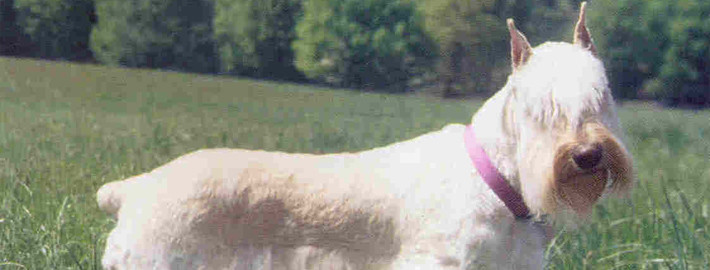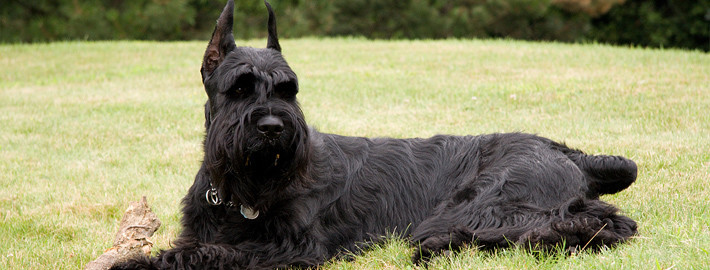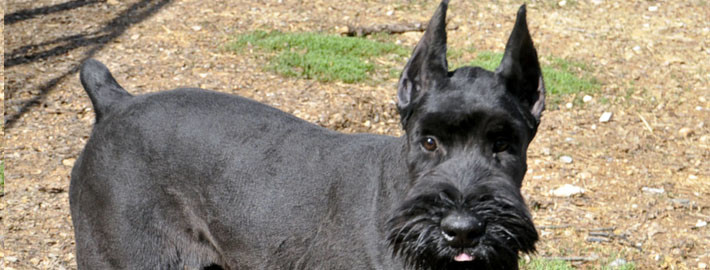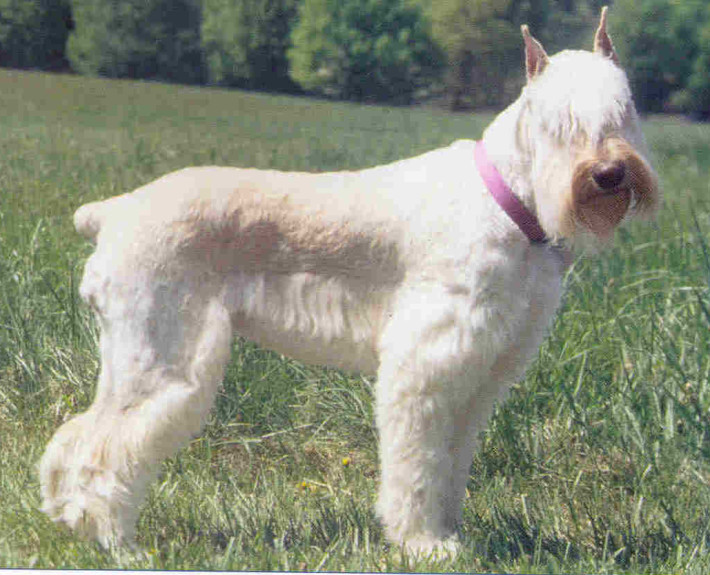What makes the Giant Schnauzer Unique?
These large but lovable grey dogs have been winning hearts for hundreds of years.
Page Contents
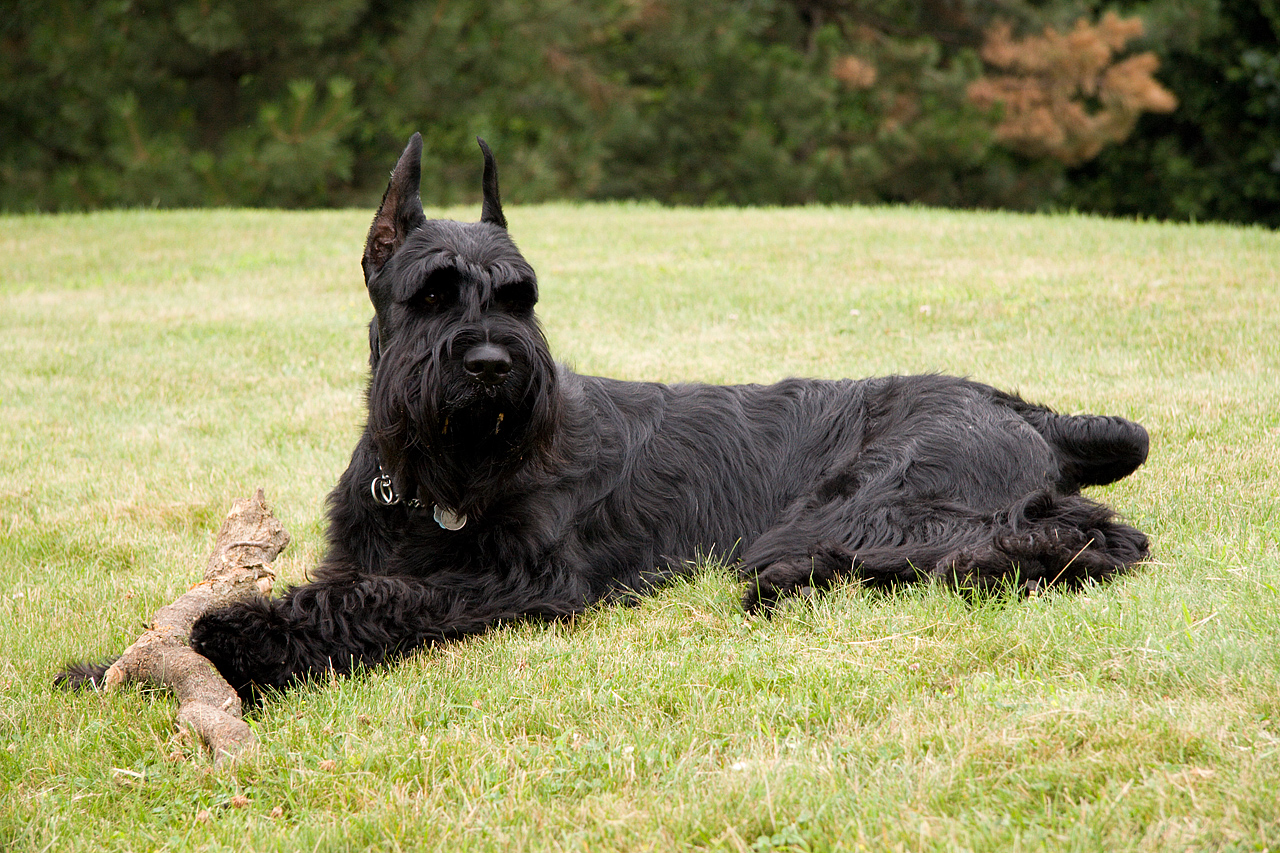
Is the Giant Schnauzer Right For You?
These quiet but protective dogs make devoted pets that will go great lengths to keep their families out of harm’s way. They are quick learners when it comes to understanding who is welcome and who is not. Giant Schnauzers may nonetheless view unfamiliar people with suspicion, at least until they have been properly introduced to the person in question. Due to their rambunctious natures and large size, Giant Schnauzers may not be the best pet choice for households that contain small children.
In 5 Words
- Kind
- Intelligent
- Loyal
- Powerful
- Dominant
Characteristics
Learn About the Giant Schnauzer
Description
General Description
Giant Schnauzers are precisely what their name would imply. That is to say, they are a larger version of the Standard Schnauzer. These dogs have the shaggy eyebrows and beards that are characteristic of the breed. These dogs additionally possess square-shaped, athletic bodies as well as straight backs and limbs. Their build enables them to move quickly with a ground covering stride. Giant Schnauzers have rectangular heads, proportionate muzzles, and teeth that should come together in scissors style bite.These dogs additionally possess black lips and noses. Giant Schnauzers also have dark, oval eyes that are set deep in their heads. Their high-set ears are usually cropped in places where the practice remains legal but these appendages tend to be left in their natural state in places where alterations are banned. The v-shaped ears naturally hang beside the head. However, if they are cropped, the ears should stand upright and feature a pointed tip. Giant Schnauzers also have high-set tails that are often docked in places where the practice is still legal. It is likewise typical for the dewclaws to be removed on members of this breed.
Size
Females of this breed stand between 23.5 and 25.5 inches (60 and 65 centimeters) in height while the males are a bit larger at 25.5 to 27.5 inches (65 to 70 centimeters) on average. Giant Schnauzers tend to range in weight from 65 to 90 pounds (29.48 to 40.82 kilograms) with the males naturally being on the heavier end of the aforementioned spectrum.
Coat
Giant Schnauzers possess a double coat with a coarse outer layer and a plush inner layer. This configuration helps the breed withstand the adverse weather conditions that are found in their homeland. The dogs have slightly fluffier hair on their backs. They also possess thicker on their faces, particularly that which forms their bushy beards and eyebrows. Acceptable coat colors for members of this breed include tan, fawn, black, white, and salt and pepper.
Short History of the Giant Schnauzer
Although there is speculation that they may have been in existence at an earlier date, Schnauzers were certainly in existence by the 14th century. These dogs originated near the Rhine River in what is now Germany. The original breed was used for guarding property, herding livestock, and hunting vermin. A smaller version was created in the late 19th century by crossbreeding ordinary Schnauzers with Affenpinschers in order to produce dogs that were better rat catchers and that got along better indoors. However, folks from the southern portion of Bavaria felt differently and bred their Schnauzers to a wide variety of larger animals which might have included Bouvier des Flandres, Great Danes, Doberman Pinschers, and/or other local livestock breeds. The purpose for doing so was to create animals that were capable of managing cattle. However, Giant Schnauzers have also served police dogs and business guardians.
Temperament
Members of this energetic breed are extremely intelligent and strongly territorial. These quiet but protective dogs make devoted pets that will go great lengths to keep their families out of harm’s way. They are quick learners when it comes to understanding who is welcome and who is not. Giant Schnauzers may nonetheless view unfamiliar people with suspicion, at least until they have been properly introduced to the person in question. Due to their rambunctious natures and large size, Giant Schnauzers may not be the best pet choice for households that contain small children. All the same, these dogs are generally considered to be trustworthy around youngsters from their own family. Prospective owner should note that some members of this breed are known to be dog aggressive. Therefore, care should be exercised when adding one of these animals to a living situation that already contains other canines.
Caring for Your Giant Schnauzer
General Health
Born in litters of around 6 puppies, Giant Schnauzers have an average lifespan of 12 to 15 years. Common health concerns for these dogs include hip and eye dysplasia as well as a wide variety of skin and eye problems. Cancer is another ailment that is often found in this breed, with liver cancer and lymphoma being among the leading causes of death in these dogs. However, noncancerous tumors are also commonly found on members of this breed. Other health issues Giant Schnauzers owners need to look out for include joint problems, diabetes, hypothyroidism, narcolepsy, cataplexy, poor vitamin absorption, bone diseases, seizures, and heart problems. Gold and/or sulphonamides sensitivity may also be present in some individuals.
Care
Daily
Once they are fully grown, Giant Schnauzers will require a great deal of regular exercise. These dogs not only need daily walks, they will also need to be able to play with their friends and run about freely. Good pastimes for members of this breed include hiking, jogging, swimming, herding, and various types of dog sports. Giant Schnauzers that do not receive sufficient exercise and mental stimulation are known to act out in ways that are sure to displease their owners. Although that is something to keep in mind when considering any pet, the aforementioned characteristic is particularly true of this breed. In fact, it might be best to assign these dogs a job to perform in order to keep them busy.
Weekly
Regular tooth brushing is recommended to keep pets in good oral health. Schnauzers also need to have their faces washed often because excess saliva and bits of food may get stuck in their fur, which will no doubt contribute to a slovenly appearance and possible health problems down the line.
Monthly
All dogs need parasite prevention medications to keep harmful pests at bay. Most of these products should be administered at least once a month in order to work properly.
Grooming & Bathing
Giant Schnauzers have to be groomed on a regular basis. The dogs should be brushed every so often but they will also need to have their coat stripped out on a biweekly or monthly basis. This procedure can be performed at home but pet owners may instead choose to take their dogs to a professional groomer to have the matter seen about. Pets that are not to be shown can have their fur clipped short to avoid this process. Prospective owners should note that some members of this breed may be allergic to pet shampoos and proceed accordingly.
Exercise & Training
Giant Schnauzers are smart, active animals that get bored rather quickly. They are nonetheless highly trainable and quite loyal to their handlers. Even so, owners that do not show proper leadership traits may have difficulty controlling their pets. Salt and pepper colored Giant Schnauzers are said to have a more placid temperament than the others, but that is naturally a matter which is up for debate. No matter a dog’s hue, basic obedience training is certainly a must for members of this breed. As is the case with most dogs, consistent rules, a fair hand, and plentiful rewards for good behavior go along way in achieving success when it comes to learning necessary lessons.

